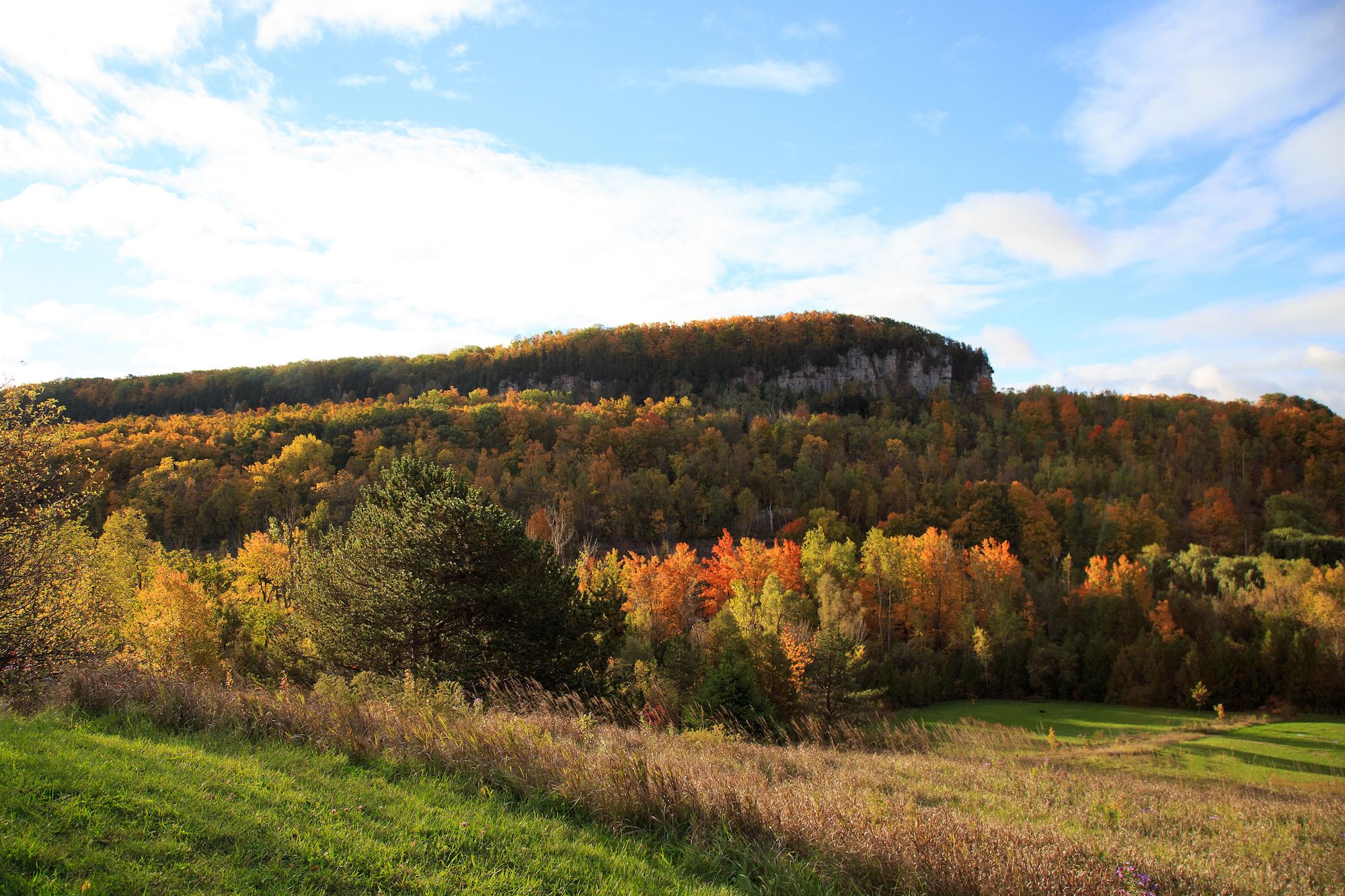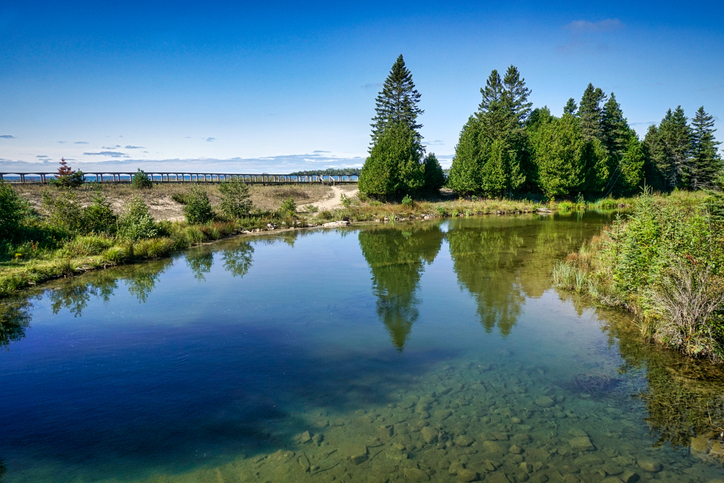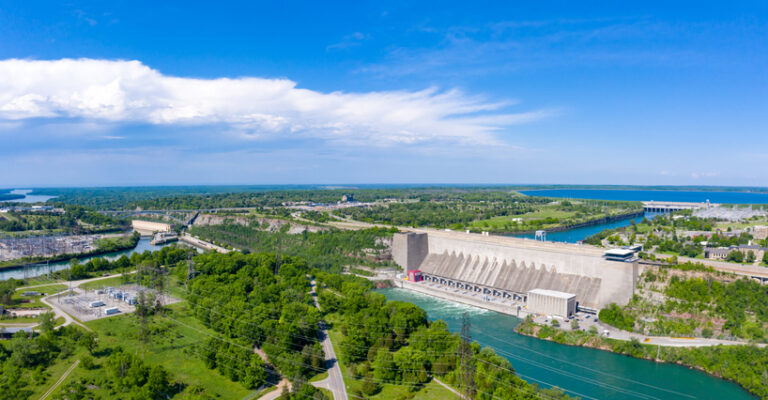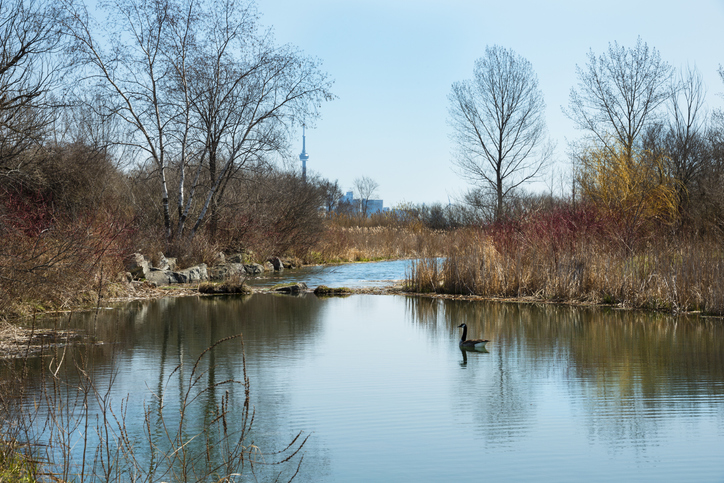Imagine living in a growing, thriving community surrounded by clean streams, vigorous forests, parks, trails to hike, bike and snowshoe, and diverse plant and animal habitat. In Ontario, Conservation Halton is a watershed agency that applies watershed management principles towards this vision, from the headwaters to the escarpment and to the lake.
Established through Ontario’s Conservation Authorities Act, Conservation Halton is one of Ontario’s 36 conservation authorities that protect, conserve, and manage natural resources on a watershed basis.
Crossing multiple political boundaries, Conservation Halton’s watershed encompasses approximately 1000-square-kilometres. The watershed includes several high growth communities, watercourses, wetlands, groundwater, biodiverse habitats, forested areas, 26-kilometres of Lake Ontario shoreline, and 80-kilometres of Ontario’s Niagara Escarpment.
Watershed community programs for resilient drinking water
Leadership, innovation, watershed partner collaborations, and subject matter expertise are all key elements in successful community programs for protecting our natural resources. The local Halton-Hamilton source protection program carried out under Ontario’s Clean Water Act, is a successful example of this type of multi-stakeholder collaboration. Its foundational elements include the watershed expertise and jurisdictions of Conservation Halton and the Hamilton Conservation Authority.
Conservation Halton and the Hamilton Conservation Authority form the Halton-Hamilton Source Protection Region. They bring together watershed partners whose common goal is the protection of Lake Ontario and groundwater sources of municipal drinking water that serve 95 per cent of the region residents. Collaborative review and discussions are fostered by facilitating regular meetings of the source protection committee and municipal partners. These in turn support necessary and proactive science and policy updates, with final review and approval by the province of Ontario.
It is important to note that there are several pieces of legislation in Ontario that help protect sources of drinking water through a multi-barrier approach from source to tap. Several municipalities not only implement local policies as required by the Clean Water Act, but also provide residents with treated drinking water per stringent legislative requirements of the Safe Drinking Water Act.
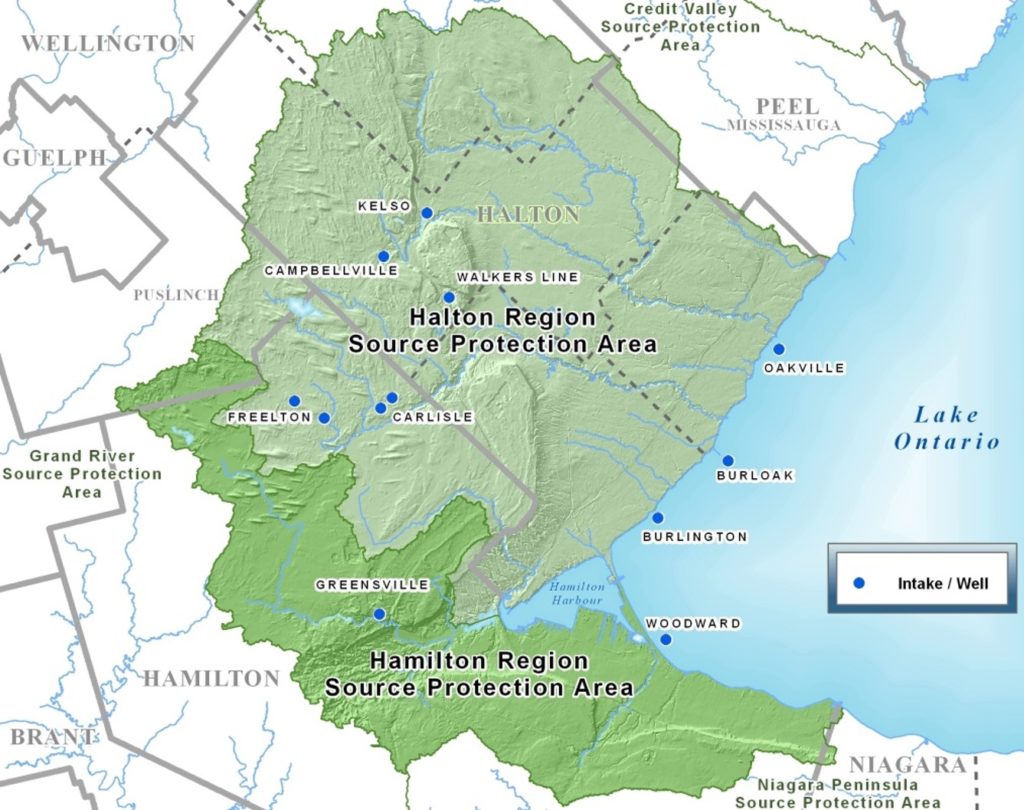
Conservation Halton has a watershed restoration program as well, to carry out projects to restore and maintain natural features such as wetlands and stream channels. These projects are often in collaboration with community partners and private landowners, resulting in multiple benefits, including the protection of drinking water sources. Some examples are ongoing restoration projects at the Courtcliffe Community Park in Carlisle, City of Hamilton, Ontario. This property is located in a “highly vulnerable aquifer” delineated under Ontario’s Clean Water Act. These aquifers are groundwater sources that could relatively easily be impacted by the release of contaminants on the ground surface.
The Courtcliffe Park Committee worked with the City of Hamilton and Conservation Halton to restore grassland, forest, and wetland habitat in the park and establish walking trails and wildlife boxes. A small floodplain wetland and a wetland back water feature were also successfully developed. Between 2015 and 2018, Conservation Halton partnered with Trout Unlimited Canada to carry out large scale restoration works including the replacement of undersized creek crossings with properly sized spanning bridges. This reduces the back water effect on Bronte Creek and Mountberg Creek resulting in improved water quality, better sediment transport, and flow conveyance.
Also at Courtcliffe Park, Conservation Halton, Trout Unlimited Canada, and the Courtcliffe Park Committee collaborated with the assistance of volunteers from Niagara College, Scouts Canada, and the Ted Knott Chapter of Trout Unlimited Canada to install “sediment mats” in sections of Bronte Creek. This innovative project involves using Christmas trees to form mats that trap sediment in the flowing creek. Bronte Creek eventually flows into Lake Ontario, interestingly at a location within the Burlington and Oakville “intake protection zones.” These zones are delineated under the Clean Water Act, to protect the Lake Ontario sources for municipal drinking water systems owned by the Regional Municipality of Halton.
Restoration projects result in resilient landscape conditions, which in turn supports the resiliency of our surface water (such as creeks and streams) and groundwater resources.
Climate change, greenspaces, and drinking water connections
According to the United Nations, water is the primary medium through which we feel the impacts of climate change. Water quality changes, aquatic habitat loss, flooding and drought are some of these impacts. Greenspaces provide critical carbon sequestration, which in turn helps mitigate some of the climate change impacts on water resources. Conservation Halton owns a significant network of conservation parks. In addition to serving as carbon sequestration areas, these parks provide a safe and healthy way for people to enjoy the outdoors, as we continue to live through a global pandemic.
The Kelso Conservation Area/Glen Eden is one of these parks and forms part of the Niagara Escarpment Park System. It is a major, all season recreational park for watershed residents and Greater Toronto Area visitors. Nestled within the Kelso park are the Kelso municipal drinking water wells owned by the Regional Municipality of Halton. These wells take water from an underground aquifer water source which is then treated to serve parts of the Town of Milton with safe, clean tap water.
The Clean Water Act requires that wellhead protection areas be delineated around municipal drinking water wells. The Kelso wellhead protection areas partly overlap the sustainably managed and protected Kelso park. Road signs signifying the “drinking water protection zone” for the Kelso municipal supply wells were installed on Highway 401 by the province of Ontario in 2017, close to Kelso park, to raise awareness and support a preventive approach to protecting drinking water sources.
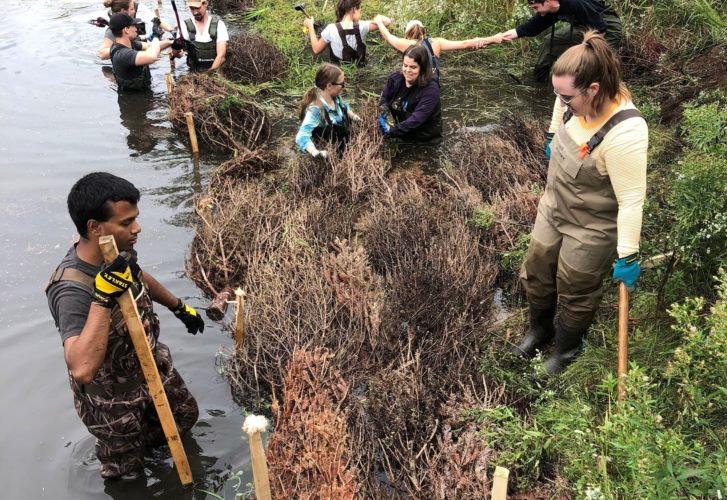
Monitoring the health of the watershed is key to assessing climate change impacts and identifying adaptation and mitigation measures. It is anticipated that air temperatures and rainfall will increase in the region, due to climate change. Conservation Halton carries out a comprehensive, long-term monitoring program for various parameters including aquatic life, stream, wetland and groundwater quality and flow/levels at various locations across the watershed.
Climate data such as air temperature, wind speed, and solar radiation are also collected at a few locations. The data collected is assessed to produce knowledge such as watershed report cards, which in turn inform decision making that support the environment and socio-economic considerations. For example, monitoring helps with early identification of potential drinking water source issues which can then be assessed, projections made, and actions taken accordingly.
Watershed management allows us to take proactive, preventative, and restorative measures that benefit human and ecological communities. Nature based solutions rooted in science, allow us to protect and restore what protects us: nature. As we continue to live through climate change, it is increasingly important to use a watershed management approach to ensure our drinking water is protected both now and for generations to come.
This article was written by Chitra Gowda and Barbara Veale for the March/April 2021 issue of Water Canada. Chitra Gowda is the senior manager of watershed planning and source protection at Conservation Halton. Barbara Veale is the director of watershed management and planning at Conservation Halton.
The authors acknowledge Conservation Halton staff Stephanie Bright for content review and Kent Rundle for information about the Courtcliffe Park restoration projects. The authors also acknowledge Kim Barrett, Andrea Dunn, Glenn Farmer, and Jacek Strakowski for details about the monitoring program.
Header Image Credit: Conservation Halton.

